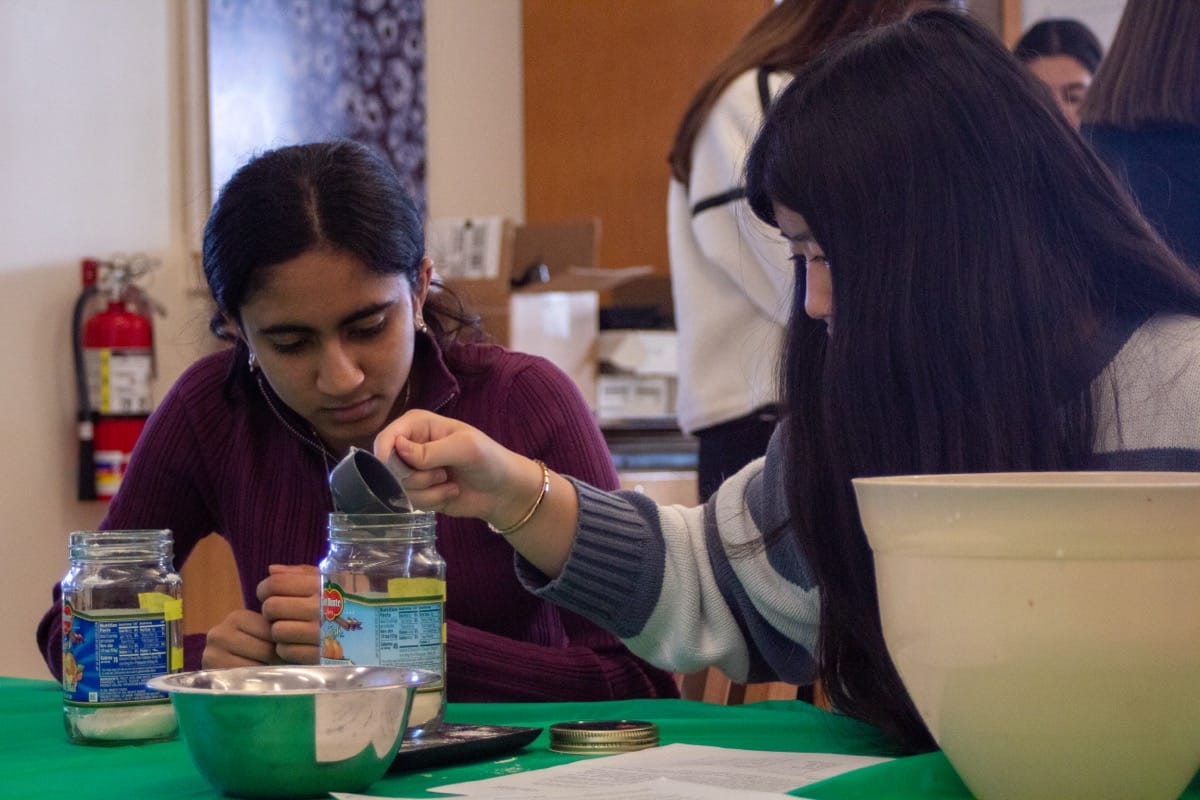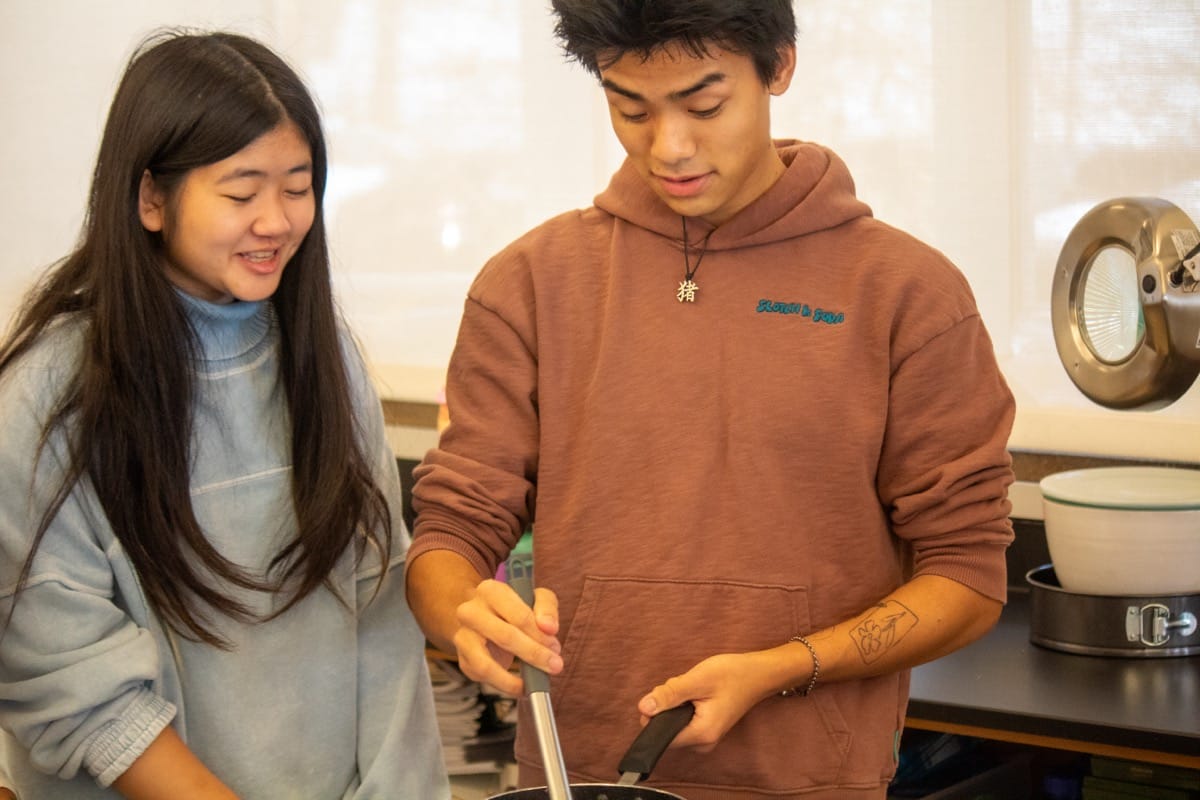Story and photos by Hale Foster ‘25
Have you ever asked why whole milk makes yogurt more acidic? Or what causes bread to rise? Have you ever wondered how boba can mimic artificial strawberry flavoring? If you have ever posed any of these questions, then Kitchen Chemistry is the class for you. Led by Dr. Megumi Yoshioka-Tarver, Upper School Chemistry Teacher, and Chaley Poth, Upper School Mathematics Teacher, MICDS students dive deep into the reactions that drive everyday cooking with delicious results. Kitchen Chemistry exists at the intersection of practical, fun, and informative, teaching students basic cooking skills in addition to the chemistry behind their work.
“Kitchen Chemistry is designed to learn the science behind cooking and food. Cooking is chemistry, and many chemical reactions are happening while we cook the food we love,” Dr. Meg writes. Her goal with the course is to encourage students to not only cook, but also to comprehend the chemistry happening in the oven. “When we understand the science behind it, it changes the way we think of our daily lives in the way we cook.”
Students have cooked and tasted a wide variety of foods, from jam to bread to yogurt and many more delicious dishes. Each food is associated with a lesson in chemistry through the inclusion of an experiment; one aspect of the dish—be it the temperature or an ingredient—is treated as a variable and consequently varied between groups. Once all the dishes have been prepared, the variance between dishes becomes a lesson in the chemical reactions that occur during the cooking process. In the example of yogurt, different groups of students made their yogurts with milk of different fat levels, either skim milk or whole milk. In the end, groups using milk with higher fat contents had creamier and more acidic yogurt.
“We looked at food ingredients in ways we’ve never seen before,” reflects Harrison Foster ’26. “We really got to see what goes inside of our food,” adds Nick Zhao ’26. As part of their deep dive into the chemistry behind cooking, a local flavoring company, Beck Flavors, sent a representative to speak about the process used to design and craft the artificial flavors we consume every day. Students benefited from a look at not only the chemical compounds responsible for certain tastes but also an insight into the biology behind taste itself, as well as a view into the manufacturing process for artificial flavors.
Every class period, the room was filled with a new yet equally inviting aroma. By the end of the course, students were able to enjoy the fruits of their labor–the dishes they cooked! Dr. Meg’s Kitchen Chemistry course was a deliciously scientific and satisfying experience for everyone involved.















